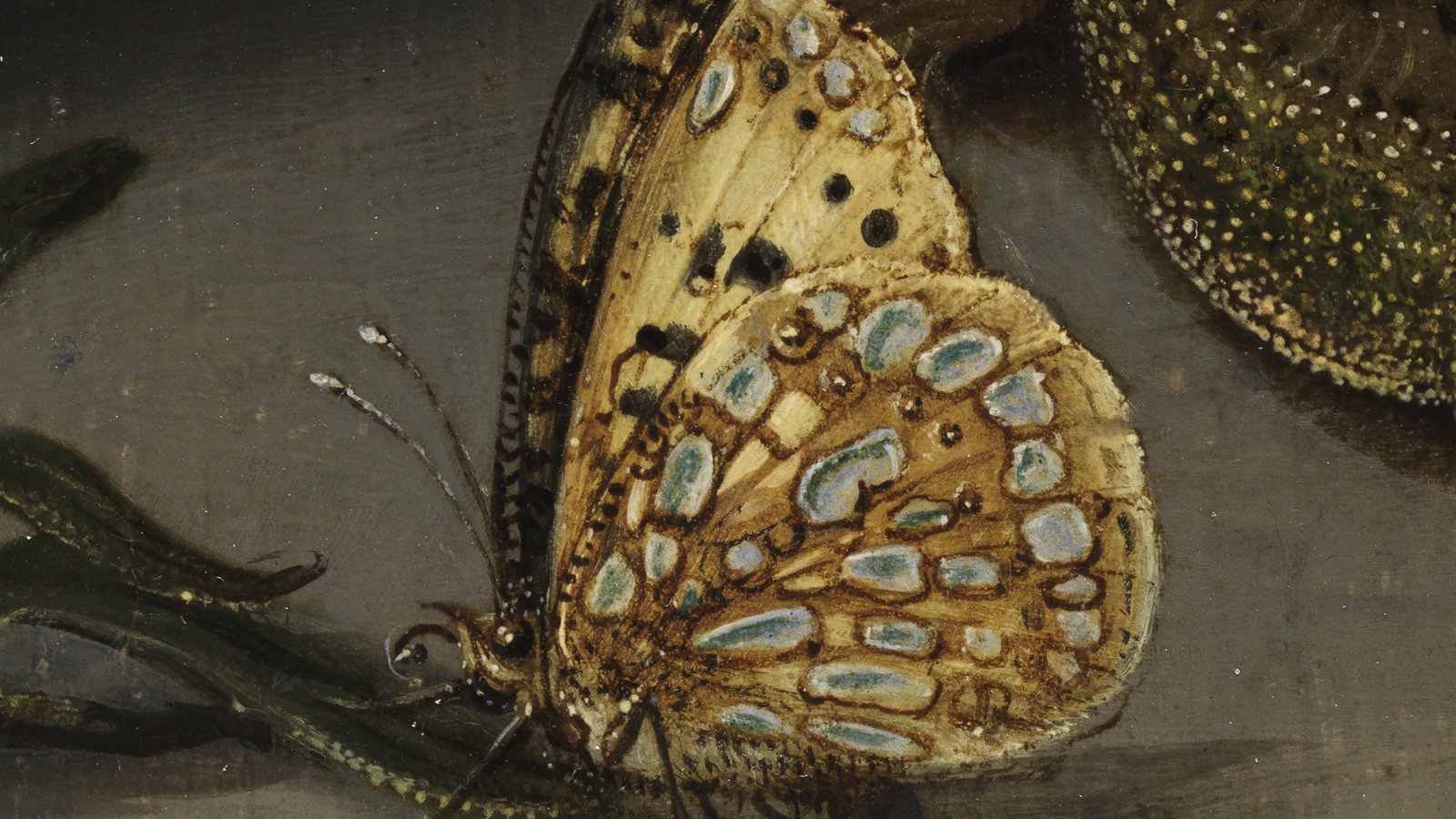El vídeo de arriba es para uso exclusivamente decorativo dentro de está página.
Exceptional picture frames
As an essential part of a painting’s presentation, a frame is more than just a decorative accessory. It helps us to focus and fix our attention on the picture while also separating the real space of the museum walls from the imaginary realm depicted by the painter. Faithful companions to the artworks they protect and embellish, frames have been fashioned in many different styles, depending on the period in which they were made and the interior decorating tendencies of that time, but they have always added value to the painting itself.
This gallery contains eleven frames selected from the museum’s permanent collection, which are presented in chronological order and were made in different countries, including Italy, Spain, France, Germany and the Netherlands. Few original pieces have made it into the museum’s halls, but there are a considerable number of exquisite antique frames protecting the paintings. Baron Hans Heinrich Thyssen-Bornemisza’s interest in this specific aspect of collecting led him to request two studies of his frames in the 1980s.
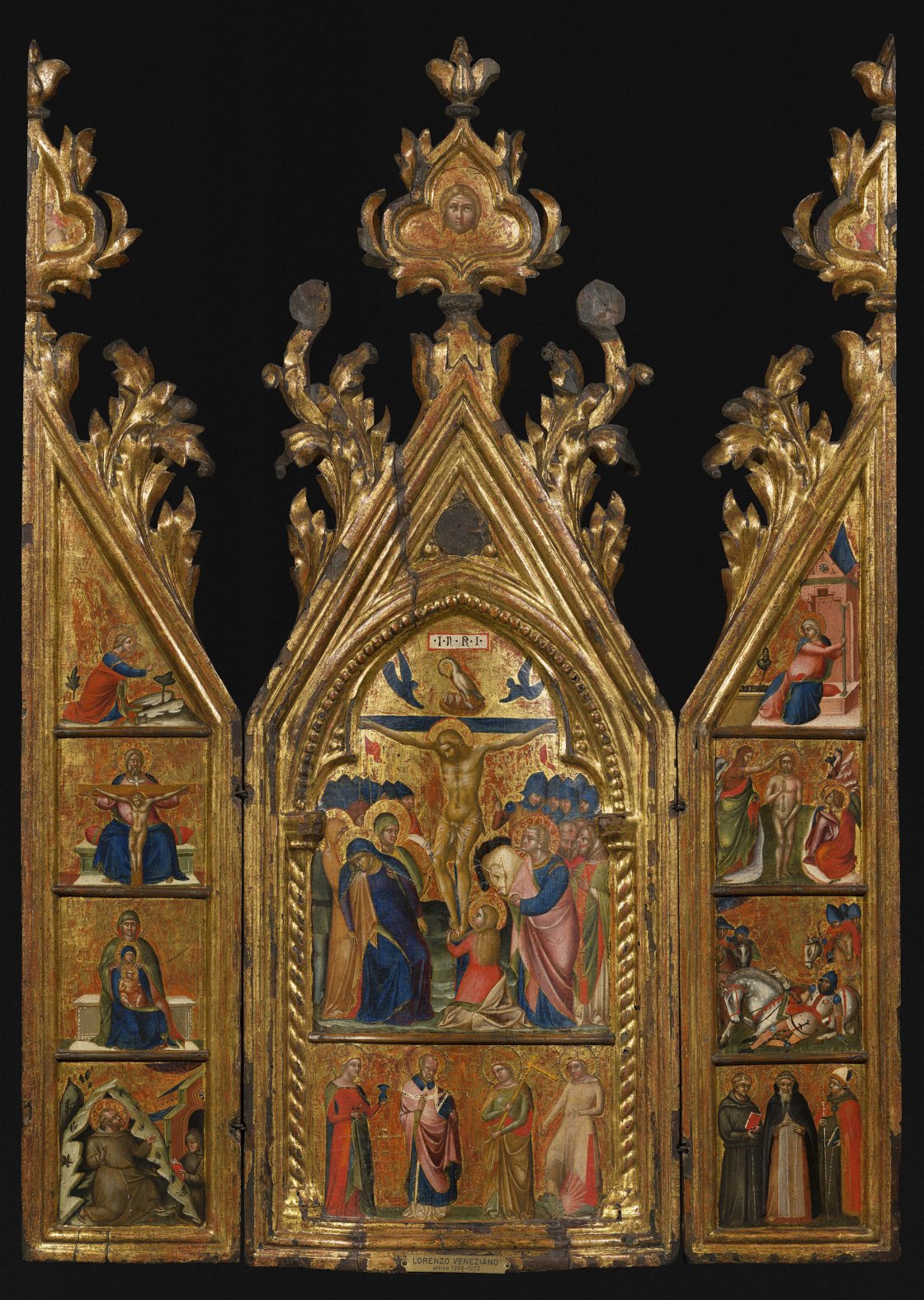
Lorenzo Veneziano
Portable triptych with a central Crucifixion, about 1370–1375
Tempera and gold on panel
Frame: Fourteenth-century Venetian; carved and gilded wood. Original
The original frame of this exquisite Venetian portable triptych is carved from the same panel on which the artist painted the work. The seamless transition between painting and frame was achieved by the use of gilding and an inward progression of small concave mouldings on all three panels. This architectural frame from the Trecento imitates the portal of a Gothic church and is fitted with hinges that allow the wings to completely fold over the central section. The pointed arch in the middle, resting on fictional Solomonic columns, is part of a triangular gable, a feature also found on the wings. The upper part of the frame is decorated with leaves and plant motifs, and the entire ensemble is crowned by three trefoils with images of adoring angels and Christ’s face.
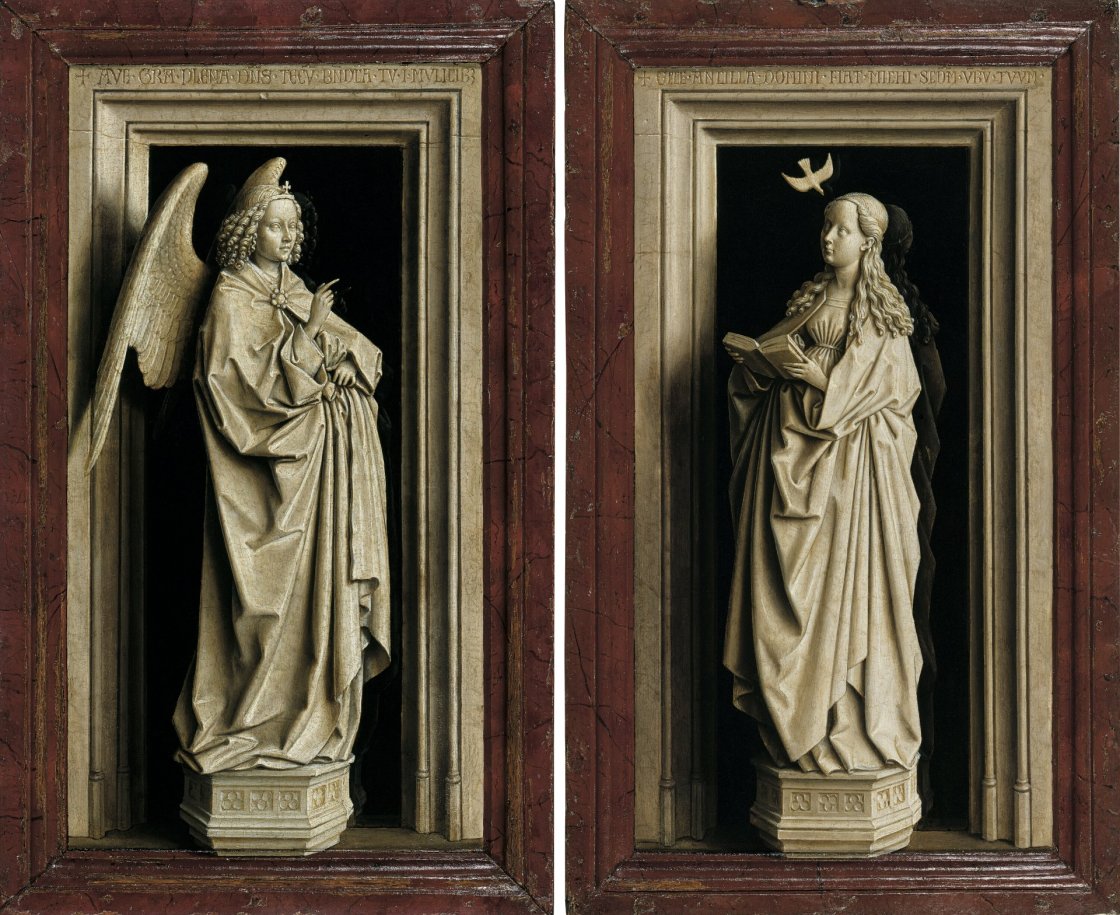
Jan van Eyck
The Annunciation Diptyc, about 1433-1435
Oil on panel
Frame: Fifteenth-century Flemish; carved and painted wood. Original
The magnificent painted frame is an inseparable part of this masterpiece by Jan van Eyck. The artist created it as a trompe l’oeil, which he regularly did in his works, sometimes even incorporating inscriptions. In this case he imitated a frame of reddish marble with a straight sight edge, concave moulding and bevelled back edge. The work has a second painted frame that gives the illusion of a veined grey stone like alabaster or marble and consists of several ‘rocky’ elements, chiefly the two vertical jambs and a horizontal lintel. The pedestals beneath the figures of the archangel and the Madonna rest on the faux stone bottom rail, heightening the deceptive impression that we are looking at a sculpture group. The back, somewhat deteriorated, was also painted by Van Eyck, possibly in an attempt to resemble porphyry with greenish and ochre tones. Stylistically, this frame pertains to the early Renaissance tradition of northern European altarpieces, with mouldings and architectural features that also protected secular works.
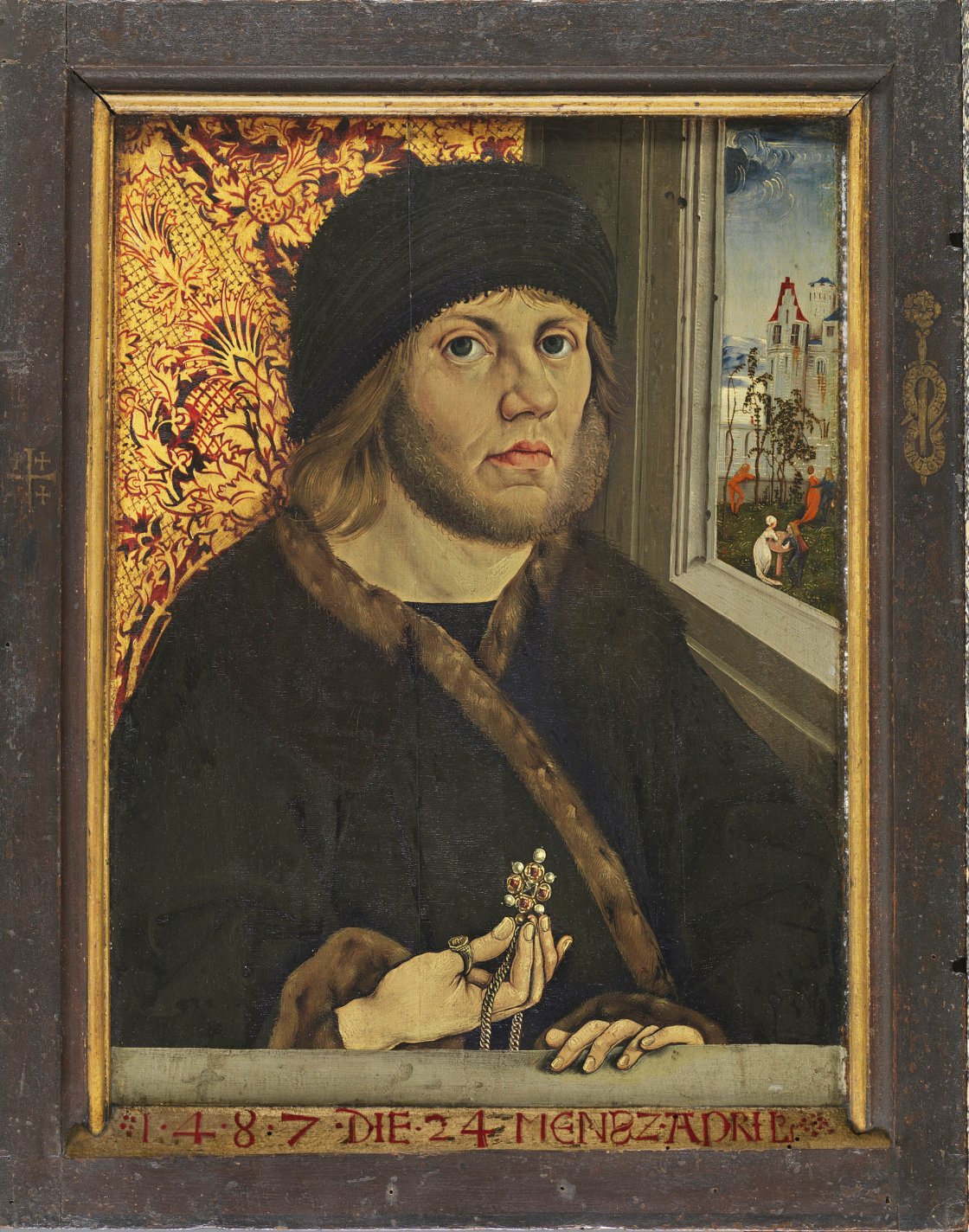
Wolfgang Beurer
Portrait of Johann von Rückingen (front) and Figure with Coat-of-Arms (reverse), 1487
Oil on panel
Frame: Fifteenth-century German; carved wood. Original
This portrait by Wolfgang Beurer boasts an original frame typical of the German Renaissance. The painted decoration on the side rails tells us that it was made specifically for this picture and helps to identify the sitter. On the left we see the emblem of the Order of the Holy Sepulchre, while the right depicts that of the Cypriot Order of the Sword, of which the portrait’s subject, Von Rückingen, was a member. The frame continues with a geometric moulding and jamb-like sight edge reminiscent of the Gothic period, while the bottom rail (also gilded) displays an inscription and doubles as an extension of the painted windowsill. The artist used that inscription to record the date of the portrait and age of the sitter, whose hand rests on the ledge in the foreground. The back of the frame has no painted decoration.
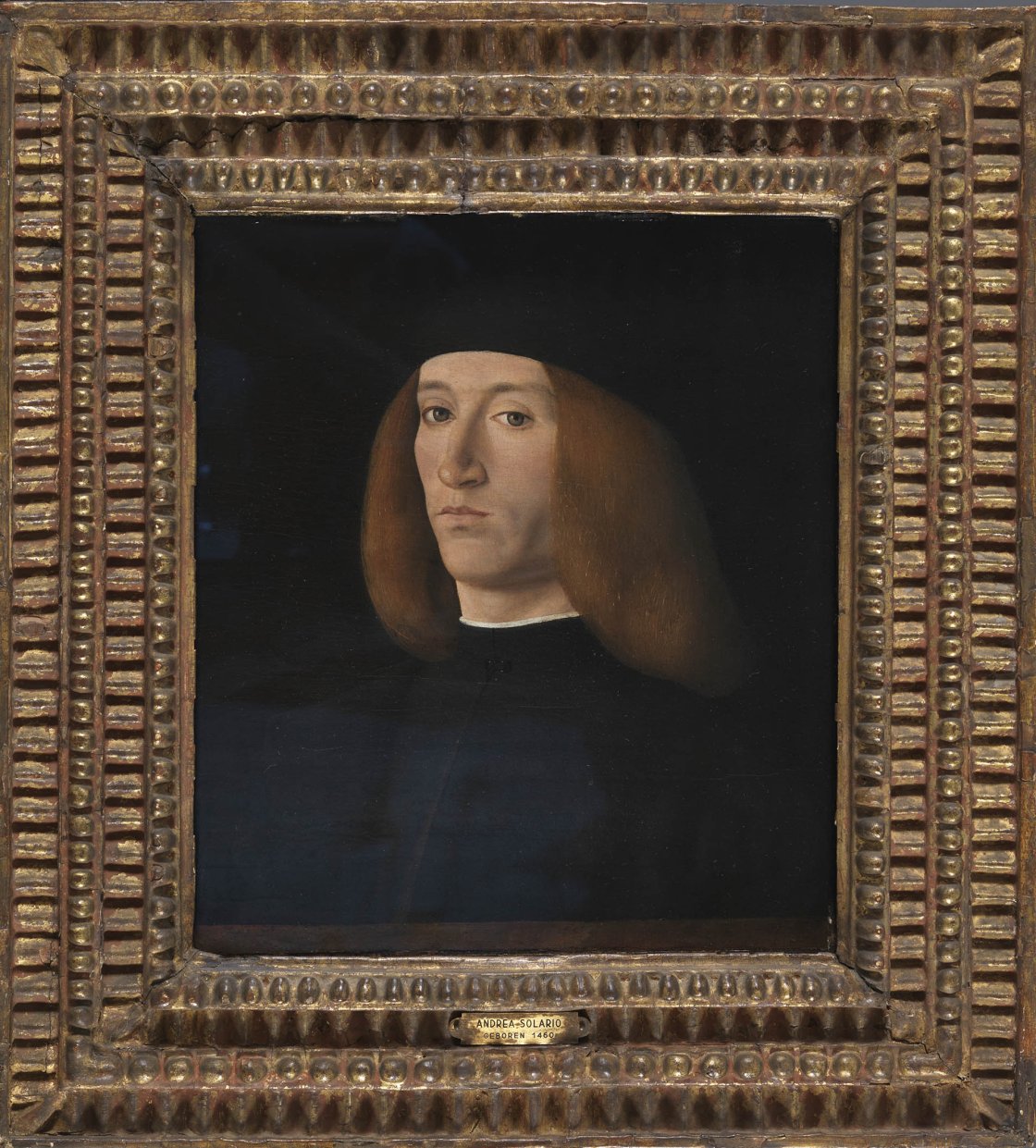
Andrea Solario
Portrait of a Young Man, 1490s
Oil on panel
Frame: Spanish (?) from about 1490–1510; carved and gilded wood
This portrait is offset by a possibly Spanish frame made sometime in the late fifteenth or early sixteenth century. One of the most striking things about this original piece is its design and how it is organised around the subject’s head. Each rail and stile presents four decorative mouldings between the back and sight edges, where the carver alternated between a zigzag pattern and another of round beads, which are slightly more elongated on the moulding closest to the painting. We can tell it is a reused piece because the decorative patterns do not match up in the corners. The upper right corner is the one in best condition. The ornamental design of the fillets, widely used in architecture, creates a chiaroscuro effect that lends the piece a dramatic sense of volume.
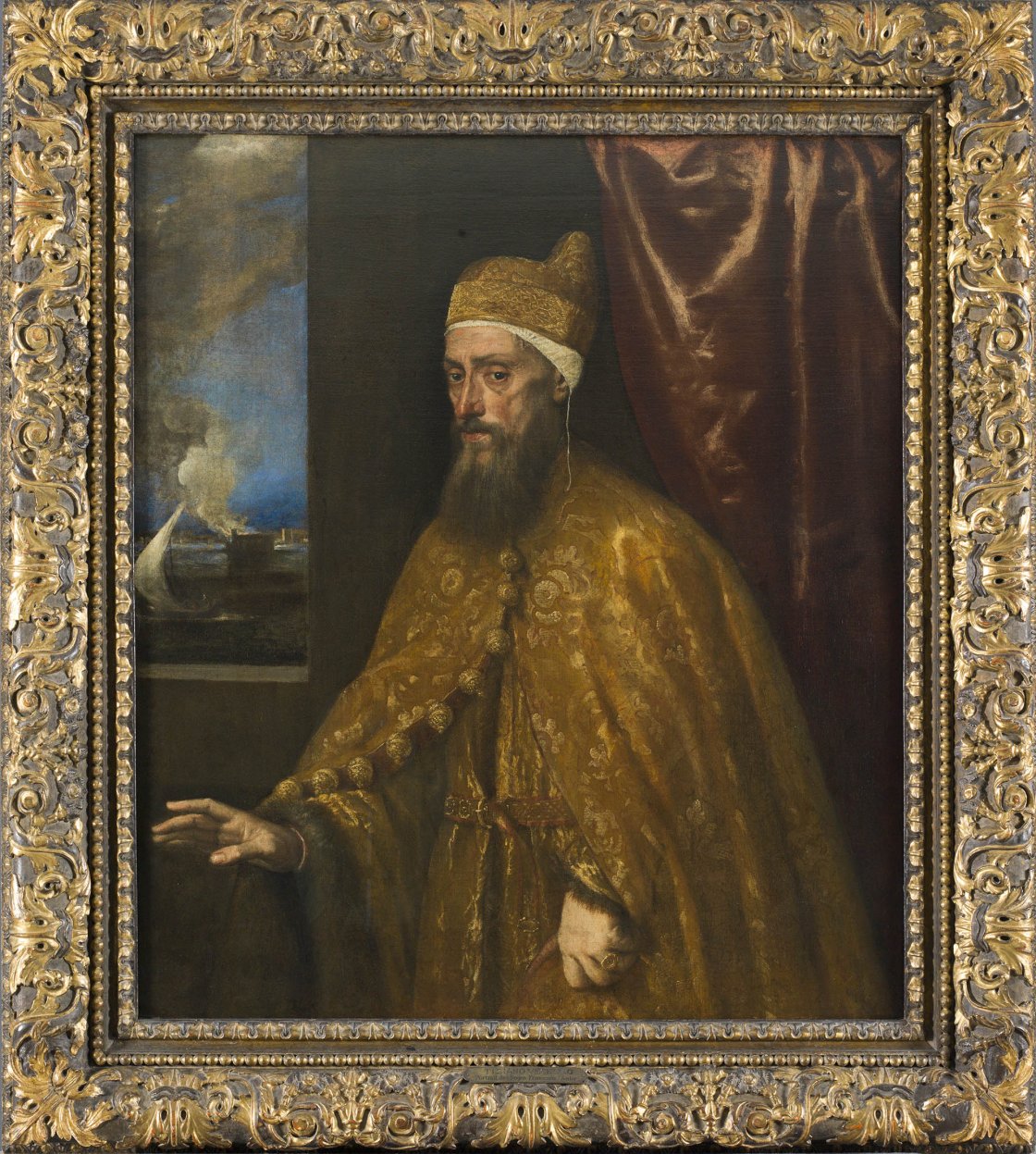
Titian
Portrait of Doge Francesco Venier, about 1554–1556
Oil on canvas
Frame: Italian, possibly originating in the Piedmont region, from about 1650; carved, gilded and painted wood
This frame has been linked to the artisans of northern Italy—more specifically, albeit with some reservations, to the Piedmont region—and dated to the mid-seventeenth century. The piece, perfectly matched to the portrait, is impressive not only for its size but also for its profusion of ornament and colour. The widest band is decorated with acanthus leaves in the corners and three systematically repeated motifs along the rails and stiles: acanthus bouquets tied with a ribbon in the central part, scrolls and a bunch of intertwined flowers. The carver completed the composition with a thin row of beads and another of fleshy leaves along the sight edge. The back edge of the frame is also decorated with an egg-and-dart design whose appearance alters depending on the angle from which it is viewed.
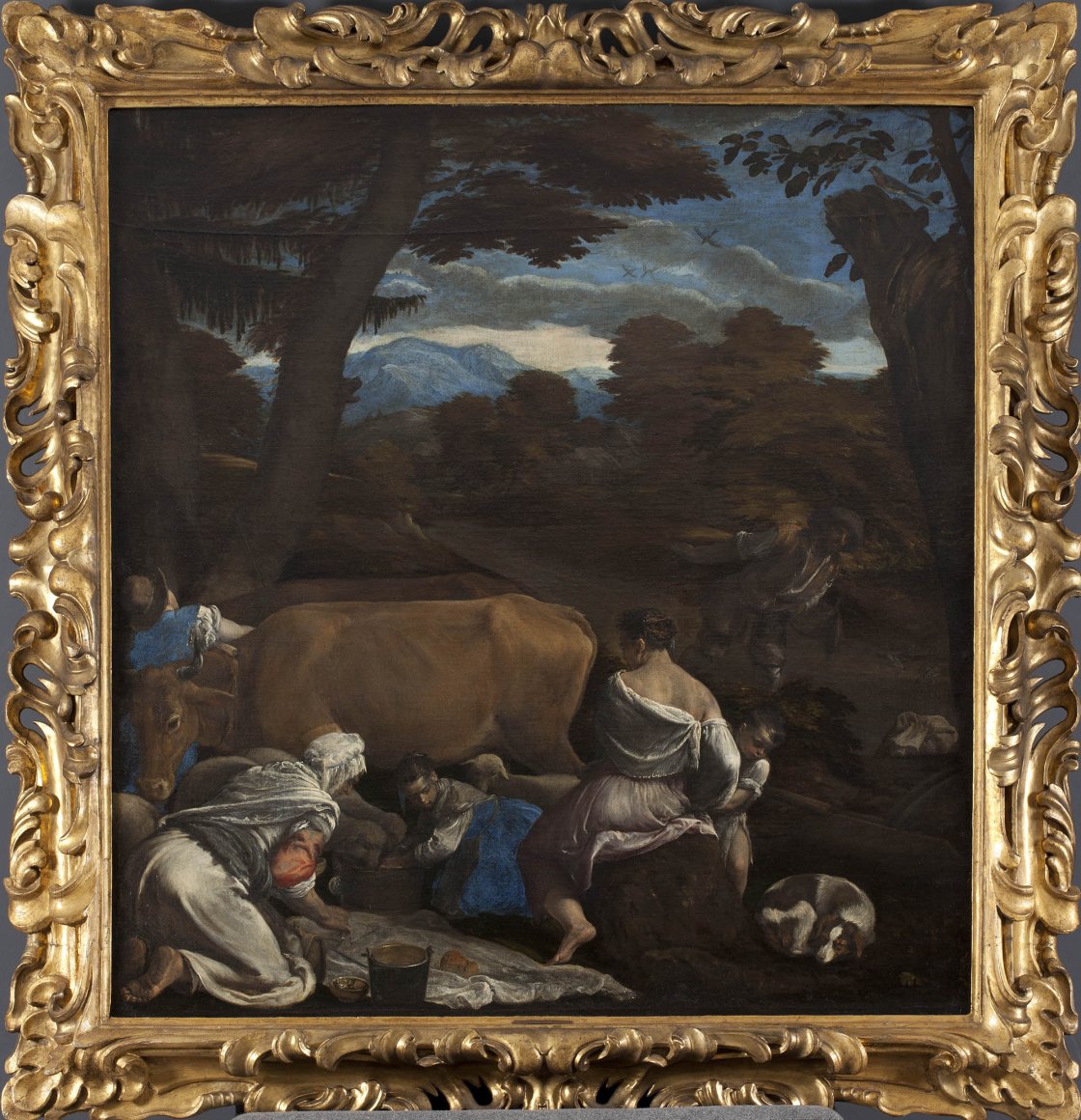
Jacopo Bassano
The Parable of the Sower, about 1560
Oil on canvas
Frame: Tuscan from about 1650–1700; carved and gilded wood
This work by Jacopo Bassano was framed in what is known as the “Medici” auricular style, invented in the context of Mannerism to reframe the paintings that Cardinal Leopoldo de’ Medici kept at Palazzo Pitti in Florence, thereby giving his collection a sense of harmony and uniformity. This style became the family’s trademark. It is characterised by a very wide section with an elaborate pattern of vegetal and cartilaginous forms inspired by the organic designs adorning the grottoes in the Boboli Gardens. The plant-based decoration extended beyond the edge of the frame in auricular or ear-shaped openwork forms, including recognisable acanthus and oak leaves at the corners and a few spiral motifs.
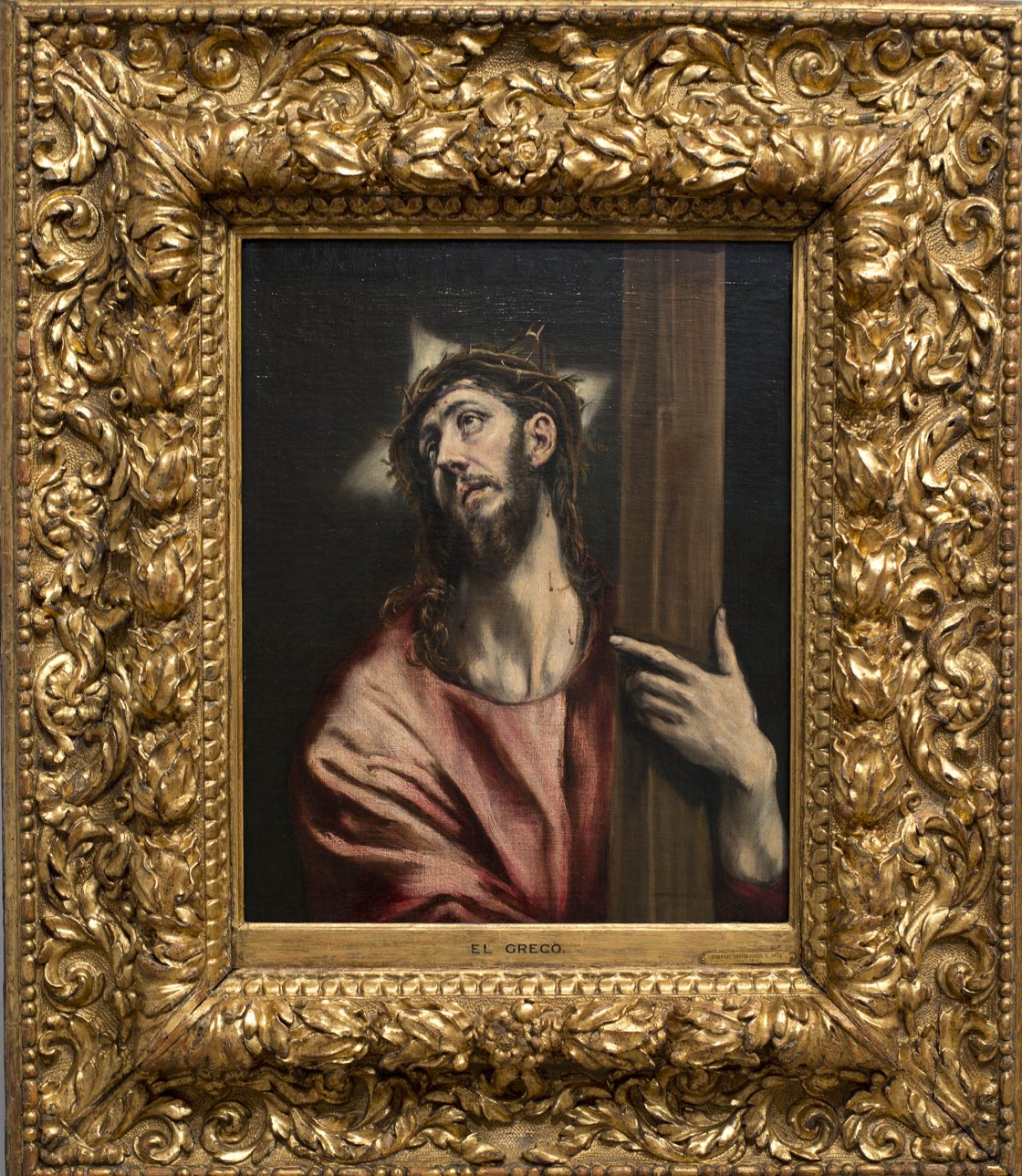
El Greco
Christ with the Cross, about 1587–1596
Oil on canvas
Frame: seventeenth-century French, Louis XIII-style; carved and gilded wood
This frame is incredibly dynamic thanks to the sculptural carving and gilding, which creates stunning contrasts of light and shadow that lend the entire piece a great sense of depth. It is a splendid example of a Louis XIII-style frame, influenced by the Italian artists who were working in France at the time yet expressed in a purely French aesthetic language. On a surface decorated using the guilloche technique, the innermost band of moulding features voluminous, bell-shaped bunches of bay leaves with berries and has decorative bouquets at the centres. The outer band is adorned with scrolling acanthus leaves that extend to the corners and alternate with flowers. The back edge is decorated with a bead-and-barrel pattern.
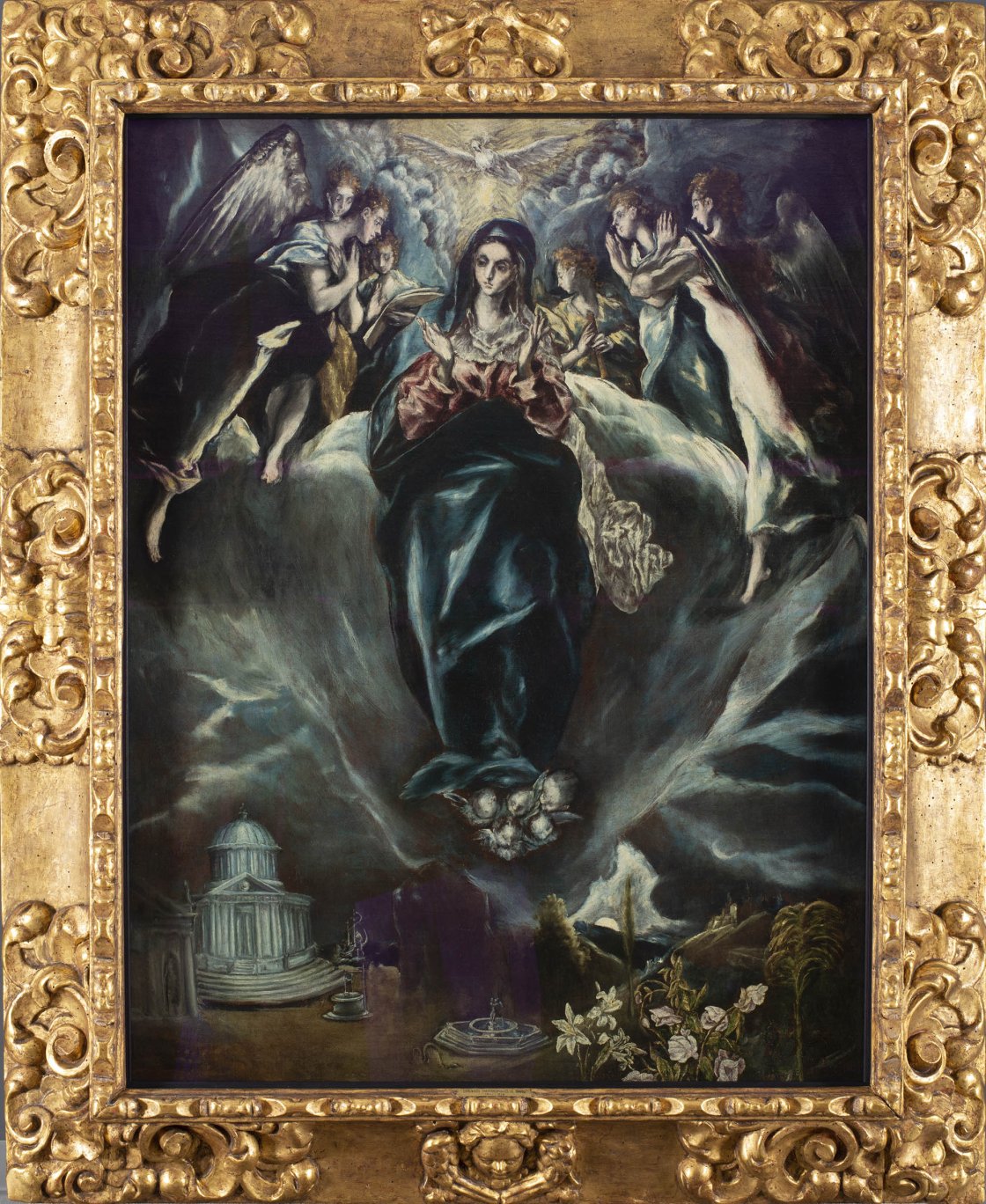
El Greco and Jorge Manuel Theotokópoulos
The Immaculate Conception, about 1608–1614
Oil on canvas
Frame: Spanish from about 1650–1700; carved and gilded wood
The Spanish Golden Age produced frames of great beauty and quality. Such pieces were designed and fashioned by a woodcarver and later decorated in the workshop of the painter who had ordered them, either by the artist himself or by an expert in gilding and scribing. This is a splendid specimen of a carved and gilded Spanish Baroque frame with a reverse profile, meaning the sight edge is higher than the back edge and intermediate moulding. That band is wider than on the prototypical Italian cassetta frames from which it came and decorated with fleshy acanthus leaves and volutes, in both the centres and corners, alternating with oak leaves. These decorative details give the frame a great impression of volume and interesting chiaroscuro effects. The bottom rail may have been altered to add a winged cherub’s head.
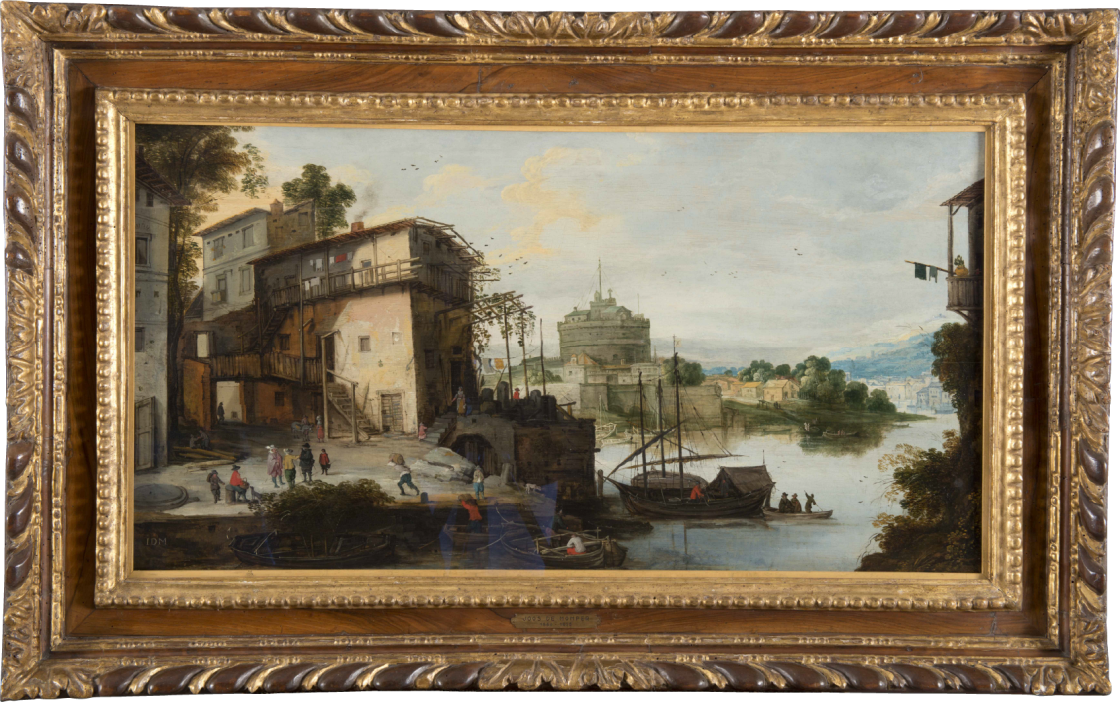
Master of the Monogram IDM (circle of Joos de Momper?)
View of a River Port with the Castel Sant’Angelo , s.f
Oil on panel
Frame: Italian, Veneto region, about 1590–1610; carved and partly gilded wood
This landscape with the Castel Sant’Angelo is embellished with an Italian frame made at a workshop in the Veneto region sometime between the late sixteenth and early seventeenth century. The eye is immediately drawn to two things: the colour combination of the chosen woods and the gilding, and the prominence of the frame’s back edge. The sight edge is plain, while the rails and stiles feature smooth mouldings in gold and natural wood, a row of beading, and two more with a bead-and-barrel pattern (three beads for every one barrel). On the back edge, lush, robust leaves of dark wood alternate with gilded ones, a technique known as luminolegno that was used in Veneto. This piece was made smaller to fit the painting and has a pendant which currently frames another landscape by the same painter.
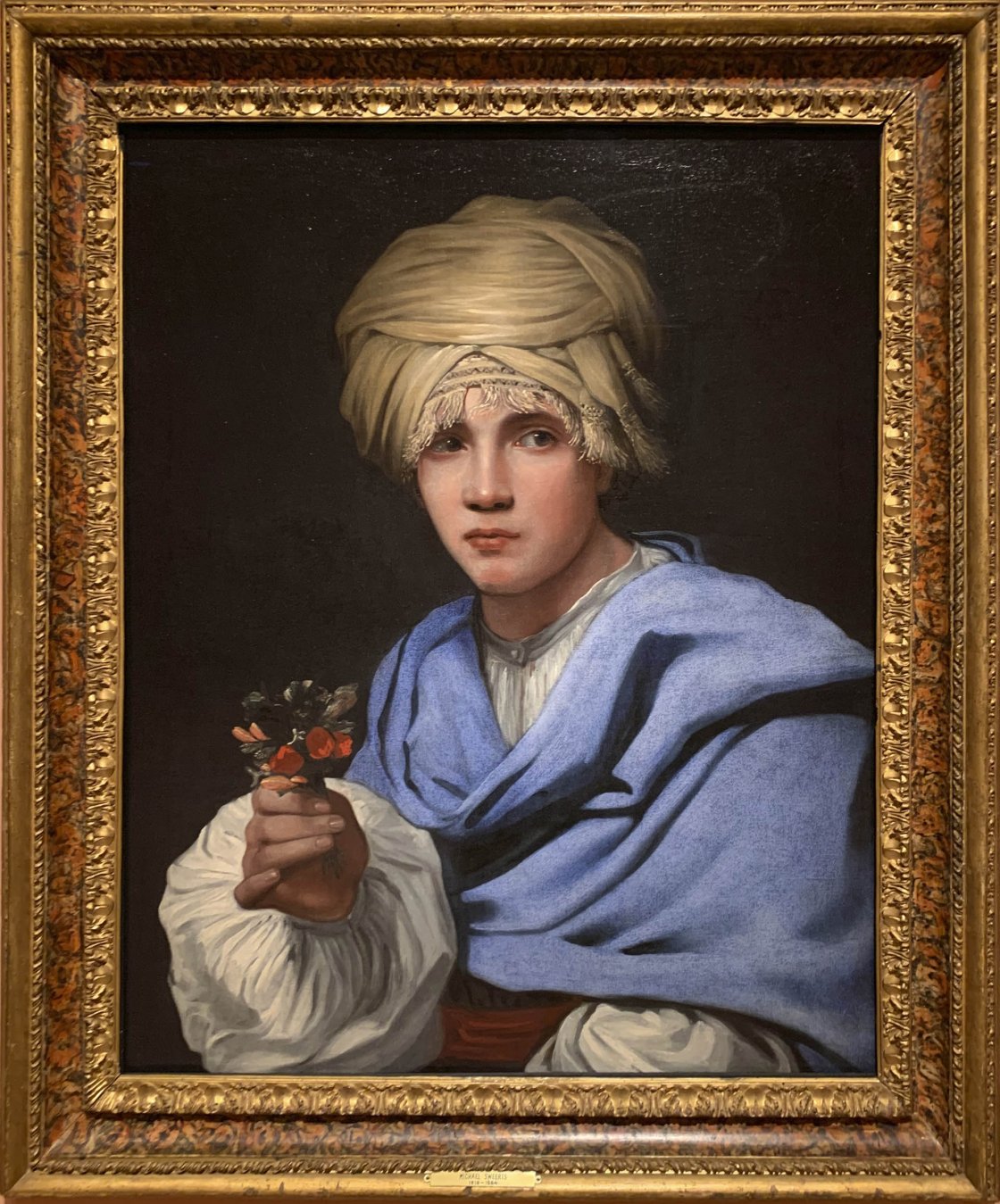
Michiel Sweerts
Boy in a Turban Holding a Nosegay, about 1658–1661
Oil on canvas
Frame: Italian, Rome, about 1735–1750; carved and gilded wood
Boy in a Turban is displayed inside an Italian frame crafted in Rome sometime between 1735 and 1750. This elegantly decorated piece features a slightly convex moulding made to resemble a piece of black and red marble, flanked by gilded mouldings—the one closest to the painting with plant motifs, and the other with cabling—and several smooth ones, with a final moulding of geometric and floral designs along the outer perimeter. Widely used in the eighteenth century, this type of frame is named after two Italian painters: Carlo Maratta and Salvatore Rosa. The model also became immensely popular in the United States, with mouldings whose reliefs create striking contrasts of light and shadow. raordinaria expansión en Estados Unidos, y destaca por unas molduras cuyos relieves contribuyen a crear llamativos contrastes de luz.
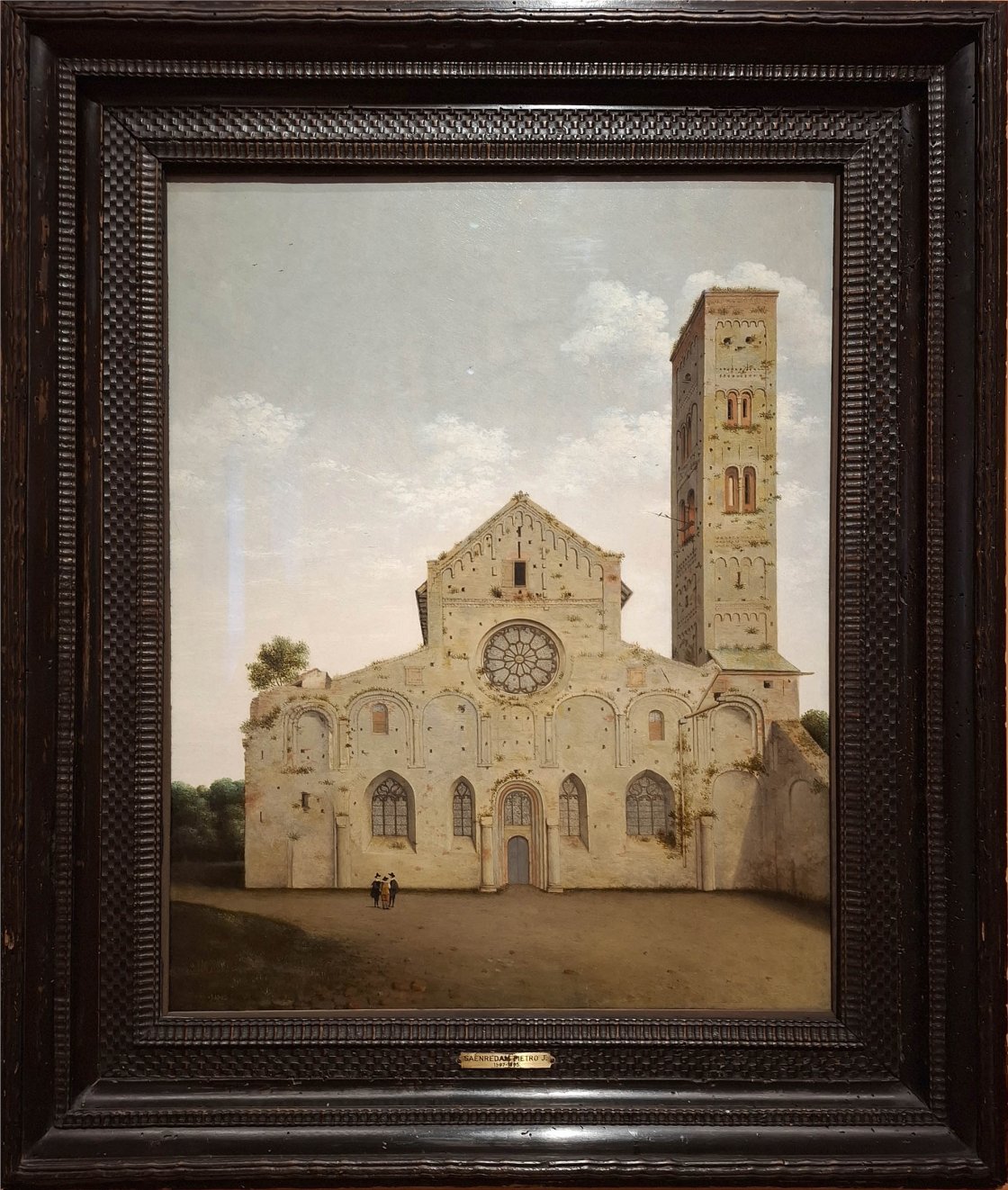
Pieter Jansz. Saenredam
The West Façade of the Church of Saint Mary in Utrecht, 1662
Oil on panel
Frame: Dutch or south German, about 1650; carved wood
The frame around this work by Saenredam is an example of a type frequently used in the Netherlands and southern Germany during the Baroque period. These frames tended to be sober and dark in colour and were often carved from fine hardwoods like ebony. The decorative pattern, known as Dutch ripple, alternates mouldings featuring basket-weave and different types of wave patterns with smooth, concave or convex fillets. These designs were made using cog-wheels fitted with blades that cut down the wood as they rolled, creating a distinctive pattern. On this frame, the eye is drawn to the basket-weave moulding near the sight edge and the waves or ripples along the sight and back edges, a decoration known as flammleiste.
